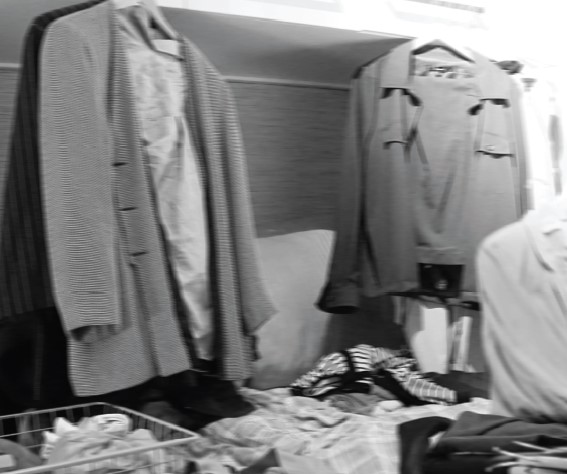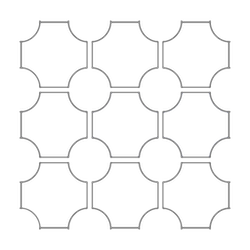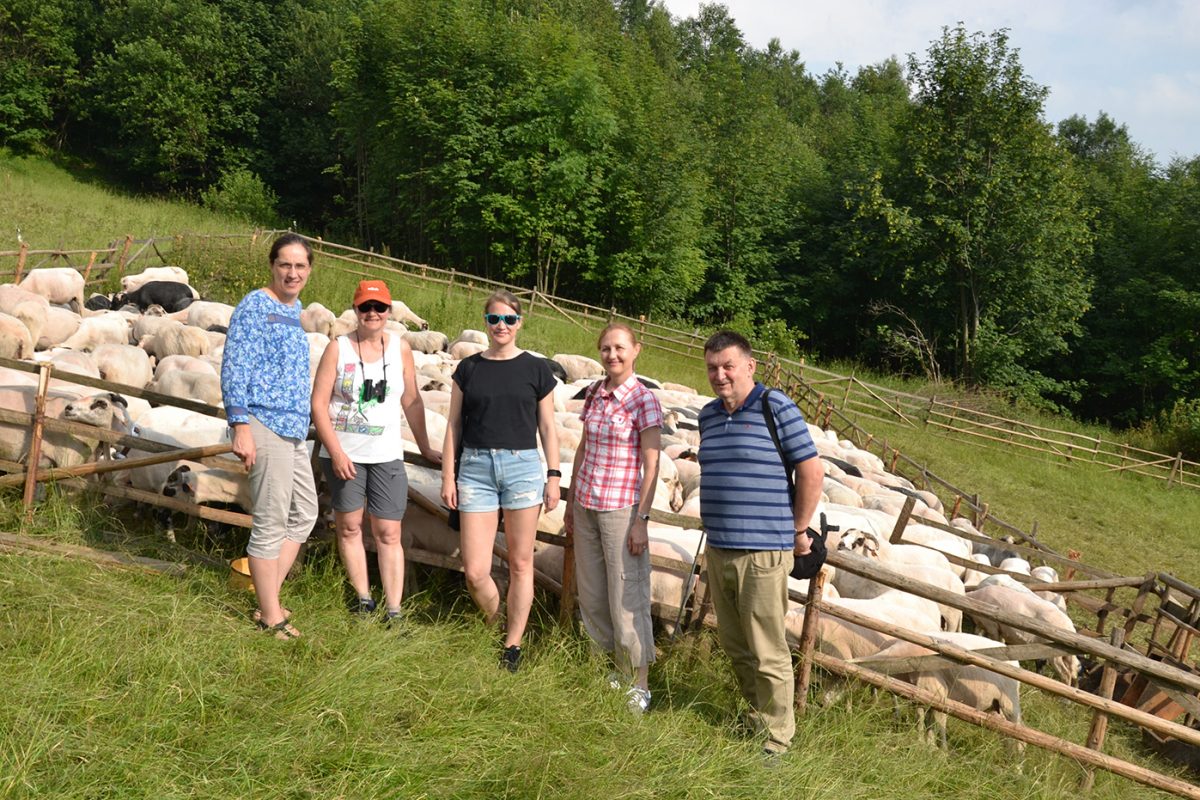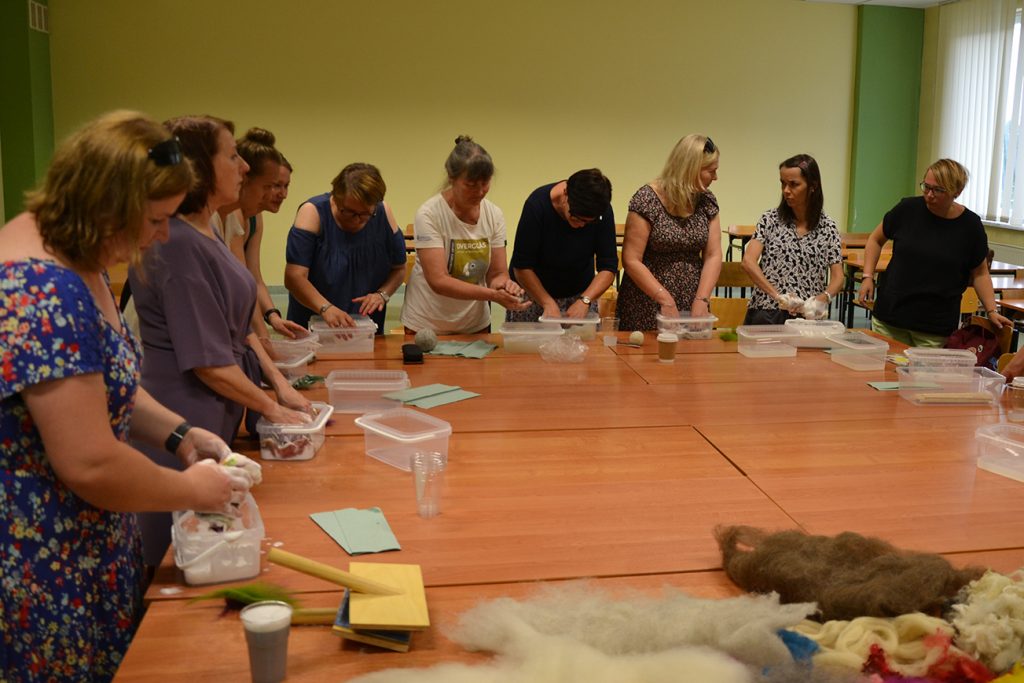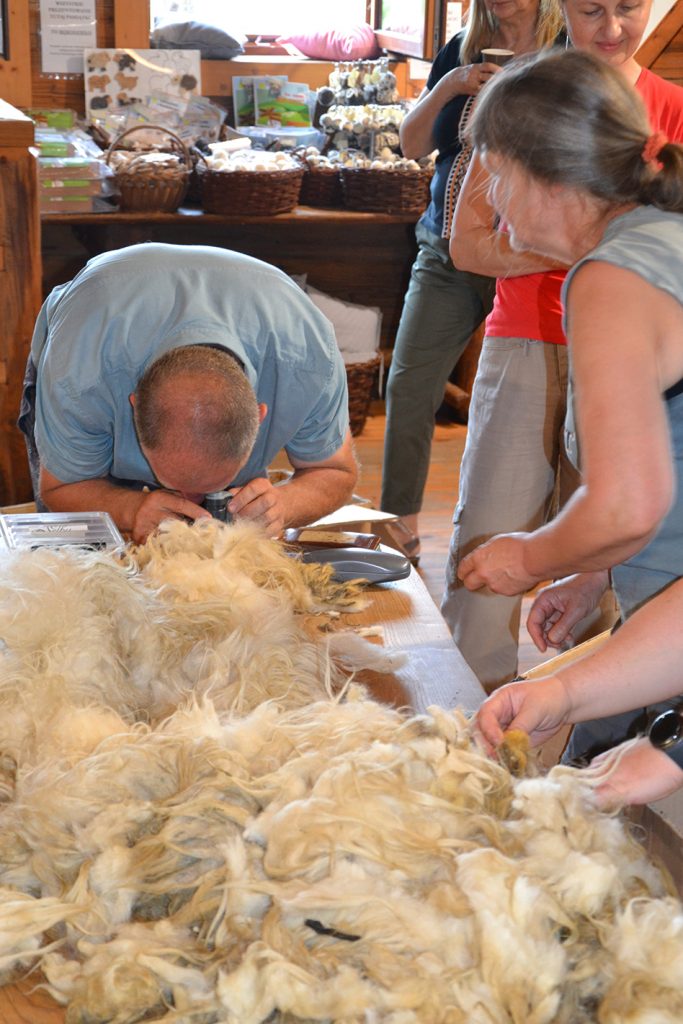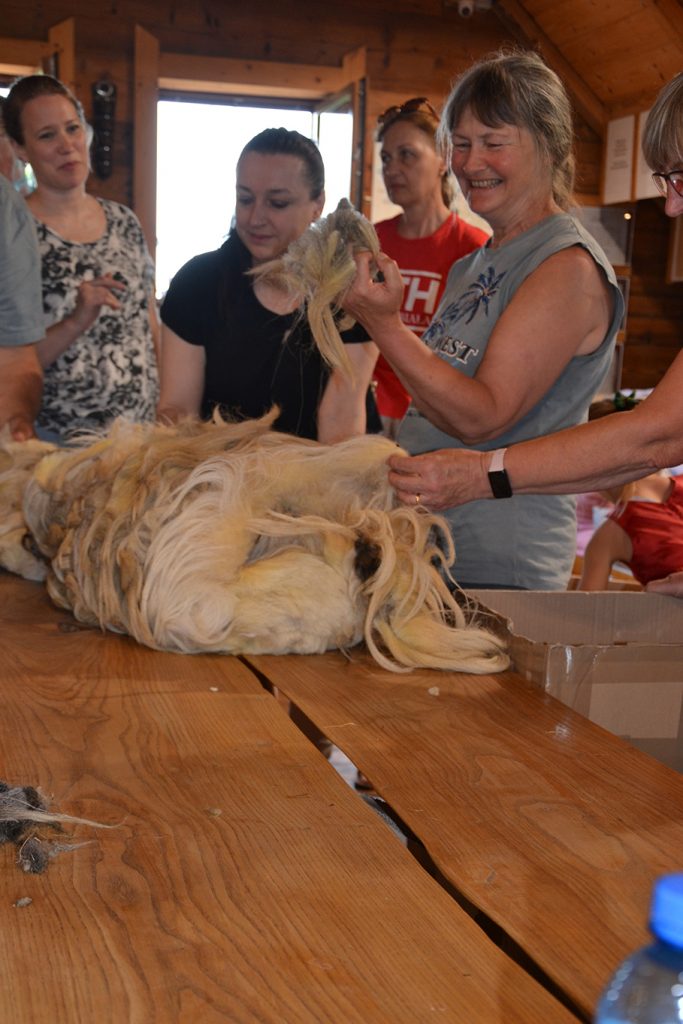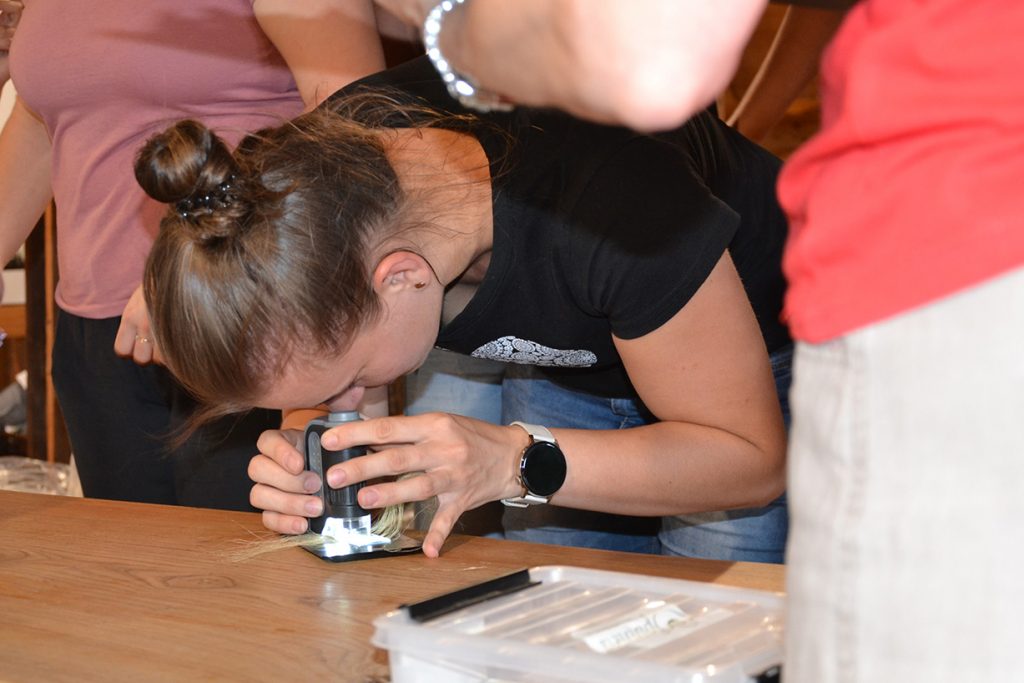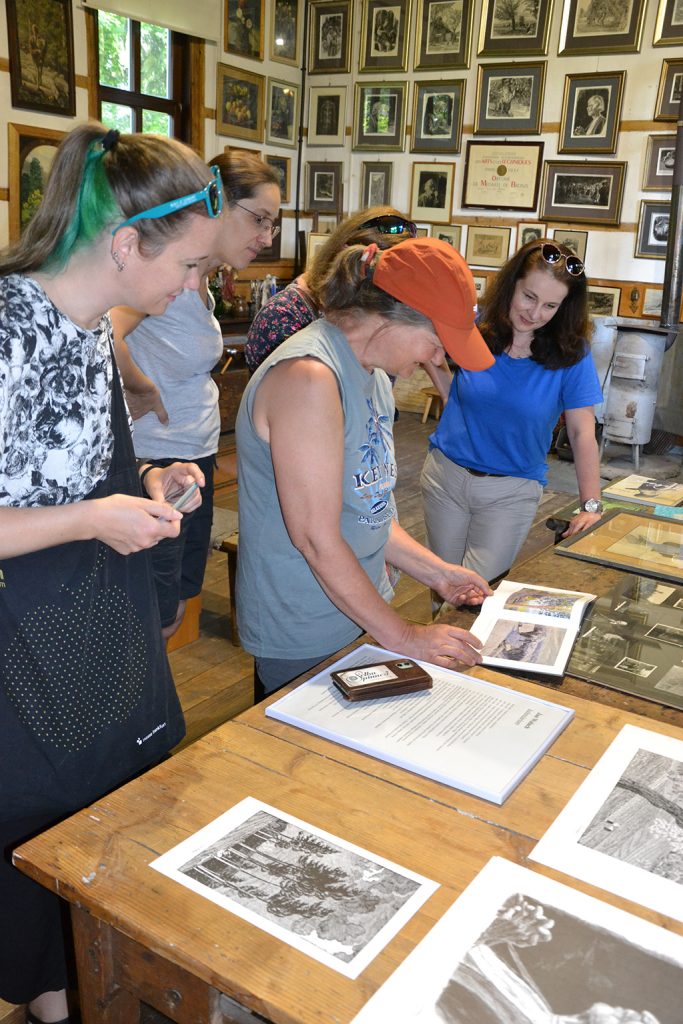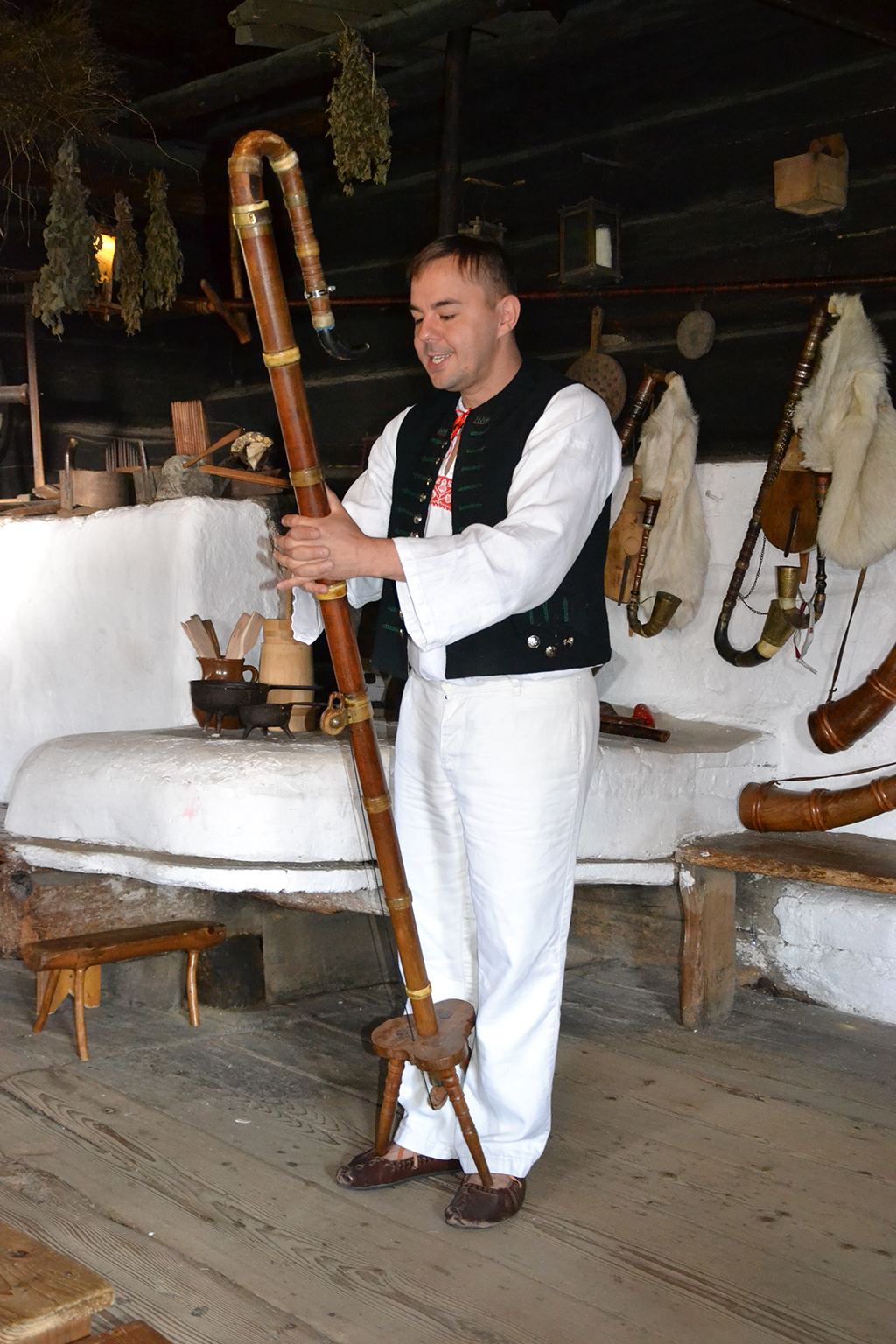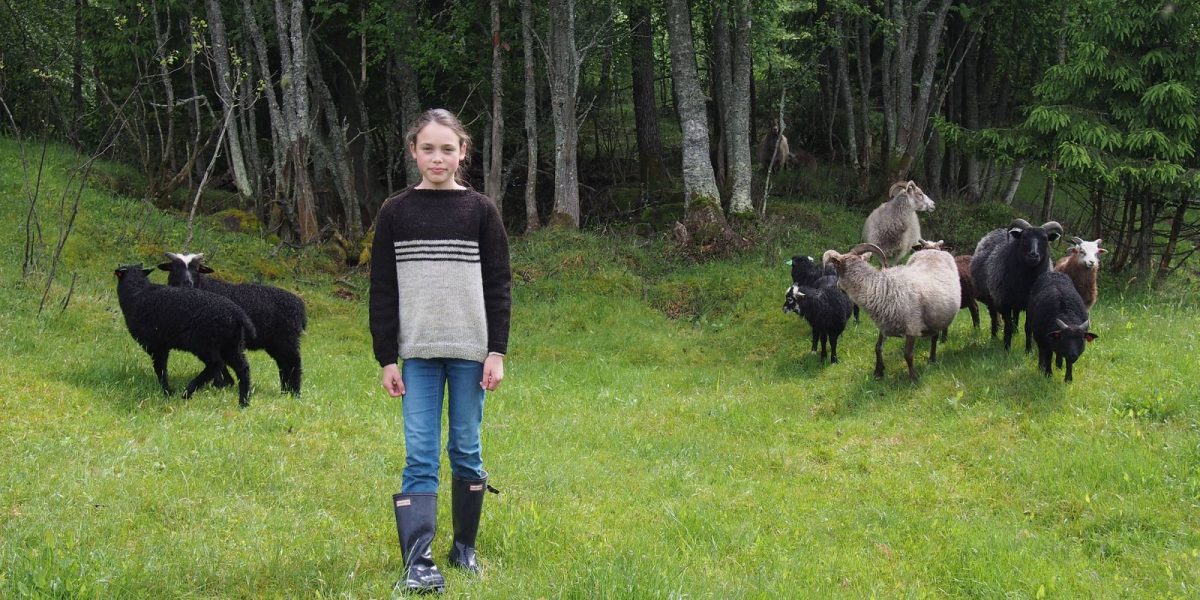The input is based on knowledge from these ongoing research projects on clothing and its environmental impact, supported by the Norwegian Research Council:
Lasting: Sustainable prosperity through product durability
CHANGE: Environmental system shift in clothing consumption
Wasted Textiles: Reduced synthetic textile waste through the development of resource-efficient value chains
Amazing Grazing: Sustainable products from rangeland-grazing sheep in Norway
Summary
We criticize the EU’s textile strategy for unilaterally addressing the global mass-producing sector of clothing production and its negative effects. Where is small-scale, local production addressed and where are the many opportunities and alternatives that exist for Europe’s indigenous raw materials and long craft traditions? The weakest point of the strategy is that it does not take overproduction and the explosive increase of synthetic textiles (plastic) seriously and does not aim to reduce this ‘out of control’ growth. If overproduction continues, longer life for textiles, more users or other measures to increase the utilization rate for individual garments, will not make sense. The measures mentioned in the strategy are not aimed at the main problem and are not suitable for achieving the goals of sustainable and circular textiles. At the same time, the measures can also have unintended side effects that further favor the fossil materials and through this, growth and overproduction will continue.
Introduction
Like many others, we at SIFO are happy with the strategy being launched and impressed that the EU wants to leverage many different tools for reducing the environmental impact from clothing and other textiles. At the same time, we see that the strategy has obvious weaknesses and, like a great deal of other work within this area, will have many consequences, but still increased environmental impacts. The reason for this is that the sector’s main challenge of accelerating overproduction is not taken seriously. We believe it is possible to do better, also within the framework set by the strategy and much will depend on details that have not yet been developed or made public. This allows Norway to take a lead – and show that it is possible to reduce the environmental impact of this sector and at the same time ensure Norwegian and European consumers access to good clothes. It can also enable parts of the industry local development opportunities. The strategy contains 6 main measures that we will comment on, but first some input on what the strategy lacks.
Good clothes, local production and the EU’s cultural heritage
Until the industrial revolution, clothing was actually sustainable, durable and “circular”. The production of textiles is at the heart of the great changes that led to increased prosperity in the Global north, at the same time as it led to great social inequity in the world and to the environmental problems we now have to solve. Clothing and other textiles are central to most cultures, including indigenous peoples’ understanding of themselves and are an important part of all social life, including traditions, rituals, and celebrations. Textile techniques and forms of expression are as old as Europe itself. We, therefore, want to open our outlook. The goal of the strategy is to an extent narrow and seen through the eyes of the mass-producing industry where nothing has lasting value. Where are the many small artisans who carry on the millennial traditions? Where is the great diversity of clothing and clothing practices that live a quiet and often very difficult life in the shadow of the global large-scale industry? Is it really the case that the EU envisions a future for textiles where the best they can come up with is that it should be “recycled”? Where is the beauty, warmth, tradition and cultural diversity? Where is the only real alternative to the global mass-producing industry: small-scale, local production? The EU has started important work with “Intellectual property” to strengthen crafts and industrial products, among other things through GI (Geographical Indications). This type of labeling and protection has long been known in the food sector. Why is it not part of the textile strategy?
It is often wise to build on existing alternatives. Today, probably 80% of EU’s wool is thrown away, and there is almost no utilization of fur and skins from hunting, trapping, livestock and pets. It is possible to make clothes from everything from fish skins to human hair and there are of course a number of plants such as flax, hemp and nettle that are under-utilized. The EU’s textile strategy is completely silent about the many untapped opportunities in the bio-based industry and the uninhibited waste of raw materials that is taking place. These are mainly raw materials with a potential for small-scale local production of high-quality goods, often based on highly developed handicraft techniques. These are raw materials that are irrelevant to the global mass-producing industry due to their price and small quantities.
If we exchange ‘clothes’ with ‘food’? Would a strategy for “Europe’s future sustainable food production” be possible without mentioning food culture, self-sufficiency, local traditions and specialities? The strategy is at best a one-sided argument for improvements in the part of the textile sector that is the problem itself. Everything else is ignored as if it does not exist or is irrelevant. We see the same thing in the development of policy instruments. It is the large mass-producing companies that are given the power to define both the description of the reality and the solutions. It is somewhat paradoxical that the strategy states that “fast fashion is out of fashion by 2030”, at the same time as the strategy itself remains entirely within the premises, concepts and ways of thinking of this industry. We are anxious that everything and everyone that are not mentioned, and not thought of, will be the ones who have the greatest problems adapting to the demands that will come. We are, frankly, afraid that the baby will be thrown out with the bathwater.
Norwegian interests
Norway has – compared to many countries in Europe – a better-preserved textile tradition, including amongst our Indigenous peoples. We have a well-functioning value chain for using the wool, not only from the dominant sheep breed, but for the entire spectrum of wool-producing animals. We have wool stations, spinning mills, weaving mills and knitting factories that supply quality goods. Norway is world-famous for its knitting patterns, and Norwegian knitwear is an obvious part of the wardrobe and celebration of our nation. The national costume (‘bunad’) is highly loved and contributes to a broad popular understanding that clothes can have value, can be inherited and can be made through time-consuming craft techniques. The national costume production has helped to maintain local raw material production, weaving mills and local tailoring, which are important elements in a potential build-up of more specialized sewing and repair facilities. This infrastructure is also important for the disabled and other consumers who cannot find clothes on the mass market. The Covid pandemic has taught us that local industrial companies are important for rapid restructuring if global sourcing is halted. The Norwegian textile industry has received little public attention, but it contributes significantly to Norwegian society both through the workforce and by delivering locally produced yarns and other products that contribute to maintaining a broadly popular textile culture with long and deep traditions.
Another important element in Norwegian clothing culture is the ability and willingness to dress for “all kinds of weather”. We have good clothes for children and many companies that help to constantly develop the concept of layering with wool innermost – which has made it possible to reach both Poles and local mountain peaks in the “Hundred Acre Wood”. Norwegian design at its best builds on our clothing culture and knitting pattern traditions and thus contributes to good clothes that people feel comfortable in and that make our daily lives warmer and more beautiful.
The Norwegian textile industry is alarmed by the EU’s strategy both because it completely lacks an understanding of what clothing is and can become, and because the “global mass-producing industry” perspective potentially galvanizes instruments that endanger small and vulnerable, local and time-consuming forms of production and cultural expression, if not addressed correctly. Norwegian interests will benefit from developing a strategy where better utilization of natural, local raw materials is central – or at least mentioned.
Norway has a responsibility to facilitate a reduced consumption of the textiles that pollute the most, especially when the pollution takes place in other countries and affects human health and the surrounding environment. Even though Norway (unlike Denmark and Sweden) does not “produce” fast fashion, we still have a high consumption of these clothes.
Global overproduction
The big problem in the sector is that too many clothes are made in relation to the number of people who can use the clothing. This problem is not solved with the proposed instruments but instead stands in the way of initiatives that are discussed as being economically and environmentally profitable.
There is little knowledge about the overproduction of textiles, but it is visible in different ways along the value chain, among other things, in unsold goods and returned goods that are destroyed or included in the trade of «used clothing» that is “gifted” to the Global south. With the individual consumer, the increase will show up in the form of expanding wardrobes and through the fact that more and more of the clothes never have been or will be used. This includes between 20 and 30% of the clothes purchased. The overproduction is also reflected in the disposal of clothing both in the form of growing quantities, but also because the vast majority of collected used clothing (97%) is exported. This shows that we in Norway import far more clothes than we can use. In the countries that are recipients of used clothing, overproduction manifests itself as large mountains or deserts of unwanted, but not worn, clothing. There are few, if any, who have relevant estimates of how large the overproduction is.
The EU textile strategy mainly seeks to meet this overproduction by extending the technical durability of the products (often called service life) including “eco-design” and “repairability”. We would like to remind that the clothes that make up these mountains or deserts are not primarily worn out, but unwanted. Increasing the technical life of clothing will not automatically reduce the number produced or purchased. On the other hand, it will cause the clothes to last (even) longer, whether it is in our wardrobes or in the flow of used clothes.
What the strategy should focus on, is the degree of utilization of clothing. A garment that is used little during its lifetime will have a poor degree of utilization and therefore has a large environmental impact. The utilization rate for clothing has dropped drastically in the last 20 years, and will continue to fall with this strategy. Piously asking the industry to produce a little less and consumers to buy a little less is not enough. None of the instruments (as they have been described so far) go to the heart of the problem. Neither rental, second-hand trade, longer life, repair, etc. leads to lower environmental impacts. They can, if it leads to fewer clothes being bought, and if this, in turn, leads to fewer being produced. These are two hypotheses that have not been discussed or documented, but which are a prerequisite for the strategy. The clothing industry has planned to increase its production further at the same time as the clothes are now meant to last a long time (according to the strategy), thus the utilization rate for clothes will continue to plummet. If clothes are only used 1 or 10 times, they should also be made for this. Of course, we believe that clothes should rather be made to be used 100 or 1000 times, but planning for even stronger “disposable products” is the very worst option. It is, therefore, necessary to discuss how production can be scaled down, and for which products increased strength will have some if any positive effect.
The strategy contains 6 main measures that we refer to and comment on below.
1. Requirements for eco-design of textiles so that they are more durable, can be reused, repaired and materials recycled, and do not contain environmental toxins.
Eco-design: Textiles are very complex products, socially, aesthetically, functionally and technically. Setting such requirements can thus have unintended effects. We see this clearly in the work with PEF (Product Environmental Footprint). It may sound wise that products are more durable, but no matter how strength is measured or how the limit for strength is set, this will favor synthetic textiles – which are much stronger than natural materials. If we look at how long consumers use different products, the opposite trend emerges. The “weak”, i.e., the natural fibers, are used longer. Setting requirements thus strengthens the products that are used the shortest. This is one of many examples of how “eco-design” is not a simple field at all and that good intentions can easily have catastrophic consequences.
Durability: The document uses the term long-lived, but the fact that something lasts a long time does not necessarily mean that it is used a lot. And this duration has both a technical and a social side. Said a little differently; if you produce a “merch” t-shirt, it may well be that it can “last” a few hundred years, but still never be used ever again after the event you participated in. In an economy with overproduction, that products last longer will first and foremost contribute to greater accumulations of products and when they are discarded, they still retain the potential useful life-span. The term thus ignores the social side of clothing consumption and the subjective perception of consumers of when a garment has been “used up”. In order for the garment to activate more use, there must necessarily be another user for it, and this is not a given.
Reuse: Reuse takes place both in and outside the commercial clothing market. In Norway, we have a very small market for buying used clothes, but a well-established tradition of heritage. The vast majority of collected clothing is exported for reuse in other countries, mainly the Global south. Important in a Norwegian strategy will be that more is “used up” in Norway, and that the most common form of re-use (inheritance) is not only replaced by buying and selling, but that re-use replaces the purchase of new goods. Reuse in itself does not reduce environmental impact. If it is to do so, it must replace the purchase of new clothes. Reuse is therefore not a goal in itself, but a possible way to increase the degree of utilization of clothing.
Repairs: Most repairs in Norway take place in the home. Strengthening repairs can be done through better training in schools, through support for NGOs that contribute to adult and child education, and for companies that develop good systems for collaboration on repairs with their customers. It is also possible to support small-scale tailors directly, both because they also do a lot of other socially useful work, such as adaptation and altering, and production for people who have different needs, for example, due to disabilities and mass-produced clothing that does not fit. In other words, it is necessary to lift this discussion out of “VAT reduction” and to instruments that will both work better and be easier to implement.
Repair is also part of the thinking around “eco-design”, i.e., that all products should be “repairable”. Clothes are mainly repairable. When they are not repaired, it is because they are so cheap that this does not “pay off”. In other words, it is the cheap clothes that are not «repairable», but this logic is not discussed. There is little reason to believe that the EU wants to ban cheap apparel and this discussion is rather about the technically repairable clothes. So what clothes are these? We see two groups of clothes that stand out and that we will briefly comment on.
“Intelligent textiles” or what is often referred to like this, i.e., textiles with electronics embedded. It is completely unproblematic to ban these from the market, we do not need flashing sneakers or Santa hats (with batteries that cannot be replaced), but this does not make up a large part of the market.
Elastane, on the other hand, does. In underwear, gym clothes, jeans, t-shirts, etc., a small percentage Elastane (elastic plastic) is mixed in to give these clothes stretch. This ensures that the clothes “hold” their fit and form. The problem is that Elastane has a shorter life than the materials it is used in, and if it is mixed in or integrated in other ways, it will not be possible to replace it. Will stretch in jeans, gym clothes and underwear be banned? And elastic that is part of the waistband, and thus irreplaceable? When the Elastane in the fabric has lost its elasticity, the clothes can no longer be repaired, but they can become more durable. Will there be a time-limit rule to how long Elastane should last? Clothes can in principle last for hundreds of years. The more clothes we have, the older they get. How many years do we have to require the clothes to last? Will Elastane and stretch-waistbands be OK in some products (e.g. support stockings and bras) and not in others?
We write this to remind that demanding that clothes are “repairable” will be at the expense of something else. Many consumers appreciate underwear that is invisible, gym clothes with a close fit or support stockings, etc. Based on the discussions in the work with PEF, it seems that the global, large-scale industry’s solution is a very symbolic interpretation of “repairability”, e.g. in the form of an extra button in the shirt, which is often already something most people have several dozen of. It has not been investigated whether an extra button will actually lead to more repairs, or only increased the environmental impact.
Material recycling: Textile to textile recycling is very limited today. There is no large-scale recycling of textiles (though some down-cycling is done industrially). Material recycling of the materials as new products (e.g. in the form of rags, rugs, etc.) takes place on a small scale and is difficult to scale up.
Wool recycling has a long tradition and is usually called shoddy. Yarn is still sold with the label saying “pure new wool” as a guarantee that the yarn does not contain recycled fiber. Why? Because recycling wool and other natural fibers results in weaker and poorer quality yarns. For synthetic fabrics, this is different. They can – but do not always – become weaker depending on the process used. In cases where the textiles become weaker after recycling, it has been shown to mean more emissions of microplastics, since the fibers are shorter.
Demanding mandatory recycled content will (fortunately) take time, as long as the EU’s textile strategy makes it so clear that this is fiber to fiber, and not fiber from other value chains, such as rPet from bottles. At the same time, both the waste hierarchy and the findings from research indicate that there are very few “environmental benefits” to be gained from recycling. There is also a danger that this will lead to even more fossil materials in clothing, because this is the only clothing manufacturers have so far extracted from other value chains and been allowed to call “recycled”.
Environmental toxins: This is important. It would be a good start to revise the «regulations for fiber labeling» to include all chemicals on the «list of concern» and at the same time decide whether plastic is an environmental toxin. A weakness in the strategy because it does not discuss whether textiles should be included in relevant regulations of environmental toxins (e.g. GMO, export of hazardous waste, etc.).
2. Stop/prevent discarded/returned textiles from being binned and/or destroyed. The Commission is considering banning the destruction of unsold and returned textiles.
Destroying unused goods is obviously a ‘no-go’. But if no one wants to use these products, or they are dangerous, then why shouldn’t they be destroyed? We believe that the source of this problem is overproduction and should therefore be stopped by capping production. Once clothing is produced and unsaleable, it should be very expensive to destroy it. We have made a proposal where this is part of an EPR variation, which we have called Targeted Producer Responsibility, which also includes an alternative to a banning this practice. There is currently great uncertainty about the extent to which the destruction of unsold goods actually takes place and it will therefore require a greater degree of transparency if this is to be regulated in any way.
3. Limit microplastic emissions. The Commission is launching a separate initiative to reduce unintentional emissions of microplastics into the environment in 2022, which includes emissions from synthetic textiles.
Textiles lose fiber in use and washing, and they dissolve into microfiber if they are dispersed into the environment (f. ex. face masks that litter our surroundings) or end up in landfill. For the issue of plastic and microplastic pollution, both of these two problems should be addressed. All production, transport, trade, use and recycling of plastics (including textiles) entails the spread of microplastics and the risk of plastics leaching. We therefore believe that more should be done to limit the use of plastic in textile form and that efforts should not be so one-sidedly concentrated on the spread of microplastics directly from the textiles. There are great untapped opportunities to look at alternatives to synthetics and other plastics in forestry, agriculture, fishing, and in clothing and interior textiles. So far, the EU’s strategy seems to be narrow, and “waiting for more knowledge”, rather than acting on what we do know: growth in the use of fossil materials in clothing should be stopped and quickly reversed, in other words capped.
A lot of fossil materials are used in the form of chemicals for dyeing and finishing. This is the part of the textile value chain that pollutes the most. Dyeing and finishing can be said to relate to the use of chemicals, but here too there is a lot of use of plastic (and other materials from fossil raw materials that are not renewable or degradable in nature).
4. Requirements for information and digital product passports. To improve access to product information, the European Commission proposes to introduce information requirements on the sustainability of textiles and the use of digital product passports so that consumers can more easily make sustainable choices.
We completely agree that the product information must be better. At the same time, it is also the case that the systems that exist today are outdated and work poorly. We therefore need to find out how they can again be relevant, updated and better controlled.
We further believe that the information consumers need is first and foremost the use properties of clothing. The requirements for (and follow-up of) labelling of sizes and fit are absolutely central, since it is one of the most important reasons why clothes are not used, or returned in the case of internet sales. Simple and reliable information about the expected life of the clothes, the number of expected uses, degree of pilling, fading, etc., will make it easier to choose the right product. The same applies to information about wind-proofing, water-proofing, etc. in ways that enable easy comparison between products. But above all, consumers should know who produced the product and when. This will strengthen complaint rights and be essential for developing good producer responsibility. Transparency about where and by whom products are produced (the entire value chain) will be important in the work of improving working conditions and animal welfare.
The product passport could also be used to include information about the content of the clothes in addition to fiber. Such labelling of the chemicals could also include additional warnings on substances that are on the REACH watch list, and in addition to environmental information, could also be useful for those suffering from allergies.
To inform consumers about “environmental impact” presented as the level of sustainability in production, we are, however, more sceptical of, see point 5.
5. Tighten the regulations on greenwashing. The Commission will present two initiatives to combat greenwashing and ensure reliable and comparable information to consumers about the environmental footprint of products.
Greenwashing: It is a paradox that one of these two initiatives (“Substantiating Green Claims”) to which the strategy refers to, will be using PEF, which is probably the largest greenwashing project that has ever been planned. Today, there is a massive greenwashing of synthetic textiles (Plastics) within PEF, and this constitutes a threat to natural fibers, small-scale production, crafts and consumers’ interests. The mainstay of today’s eco-labeling schemes (the Nordic Swan and the EU Eco-label) and the Norwegian Consumer Agency’s understanding of greenwashing is that this should be based on documented information about the product itself and not more or less reliable global average figures, which is what PEF uses. PEF thus threatens the other eco-labels’ interests and it is urgent to demand that “Substantiating Green Claims” should be stopped if it is not possible to develop this instrument better, i.e., by not using PEF. It is also a paradox that it is the global mass-producing industry that has the majority in the technical committee (and thus veto-right) that is developing what is to be used to combat “greenwashing”, an industry that has already proven to be masters at greenwashing.
The environmental footprint of products: As the very idea of what is needed, is to label the products so that consumers will choose the ones with the least environmental impact, there are a series of assumptions that are not discussed and which we believe are untrue. These are:
• there is a big difference between the environmental impact of products
• there is knowledge about the environmental impact of products that is scientifically documented and an agreement on how this should be calculated and weighted
The first is important because a labelling scheme of “green” products in itself, can increase consumption. This will happen because it will be (even) easier to defend high consumption because the products are “green”. Furthermore, it can happen because a parameter is added to consumers’ available choices. Even today, many consumers have difficulty finding clothes they like and that fit. The products that impact the least are those that are used a lot and for a long time and thus (potentially) replace the purchase of several new ones.
If the EU finds that polyester in bedding “burdens the environment less” than cotton (as PEF currently proposes), there is a high probability that many people will buy into this, but find that they do not like sleeping in polyester, and throw the bedding in the bin, and buy new bedding.
It is a basic premise for the strategy that there is knowledge about the products’ environmental impact that is agreed upon and which is scientifically documented. This is not so. We do not have comparable LCA studies, and we hardly have LCA studies that include the use phase of clothing (with a few exceptions). The big question of how to measure natural fibers against synthetic materials is not solved and there are no current measuring methods that include microplastics, to name a few of the issues at stake. What exists in the way of indices, have been created by the global mass-producing textile industry itself, and can be considered advanced greenwashing systems. A major concern in the use of these indices, is that through a seemingly third-party certification, what the industry itself will profit on the most, also appears to be the most “green” as well.
This has also become an industry in itself. It is striking that the strategy does not ask the question of whether the knowledge exists, nor by whom, when and how it should be developed. It is not in the interests of consumers to be told that some products are “green” and then hear the opposite the following year, when new knowledge has emerged or is adopted. Developing a system which later aims to correct weaknesses and errors, is thus a very unfortunate way to go.
6. Producer responsibility. The Commission has announced that they will introduce requirements for extended producer responsibility for textiles in their proposal for an amended framework directive on waste, coming in 2023. Producer responsibility will, among other things, contribute to financing systems for separate collection and treatment of textile waste from 2025.
In the Wasted Textiles project, we have developed a proposal for how producer responsibility can be something more than just collecting money, and we have called it targeted producer responsibility. We believe this proposal can be introduced in Norway independently of the EU. The project uses actual use time and actual costs to keep the textiles in circulation as a starting point for a differentiation of the fee manufacturers have to pay. This will make it possible to create an equal playing field for imports from foreign internet companies (the part of the textile industry that is growing the fastest) in competition with sales in brick-and-mortar stores. Furthermore, it will distinguish between products that are not used, or that are used very briefly, and clothes and textiles that already have a long life and thus have little impact on the environment, and also put the least burden on future collecting, reuse and recycling solutions.
